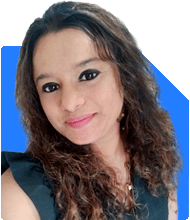26-Year-Old with 2.5L Monthly Income: How to Retire by 35?
Ramalingam Kalirajan |10881 Answers |Ask -Follow
Mutual Funds, Financial Planning Expert - Answered on Jan 27, 2025
He has an MBA in finance from the University of Madras and is a certified financial planner.
He is the director and chief financial planner at Holistic Investment, a Chennai-based firm that offers financial planning and wealth management advice.... more

I'm 26. 2.5L in hand monthly income. I have 15L in equity+mf, 2L in FD, 50k NPS, 4.5L PPF, 80k Gold. Home loan emi 30k, car loan 20k. Rent 33k. Other expenses roughly 50k. What lind of savings and investments can you suggest so I can retire by the age of 35. Thank you!
Your Rs. 15 lakh in equity and mutual funds is a great start.
You also have Rs. 2 lakh in FD, Rs. 50,000 in NPS, Rs. 4.5 lakh in PPF, and Rs. 80,000 in gold.
Your total monthly expenses, including EMIs and rent, are Rs. 1.33 lakh, leaving Rs. 1.17 lakh surplus.
Your home loan EMI of Rs. 30,000 and car loan EMI of Rs. 20,000 are manageable for now.
Assessing Retirement at 35
Retiring at 35 means a shorter investment window and longer retirement period.
You need a significant corpus to sustain your post-retirement lifestyle for 50+ years.
Maximising savings and investing aggressively is crucial to achieving this goal.
Focus on Clearing Debt Early
Home and car loans reduce your cash flow and increase financial stress.
Pay off the car loan early as it has a shorter tenure and higher interest rates.
For the home loan, prepay 10-20% annually to reduce your overall tenure and interest burden.
Use bonuses or savings to make these prepayments while maintaining investments.
Building a Comprehensive Savings and Investment Plan
1. Increase Investments Aggressively
Direct a major portion of your surplus Rs. 1.17 lakh towards investments.
Allocate 70% of your surplus to equity mutual funds for high growth potential.
Use actively managed funds for better returns compared to index funds.
Invest through a Certified Financial Planner to optimise fund selection and portfolio reviews.
2. Diversify for Stability
Allocate 20% of your surplus to debt funds or short-term corporate bond funds.
These funds provide stability and liquidity for medium-term goals.
Continue contributing Rs. 50,000 annually to your NPS for long-term benefits.
Increase your PPF contributions if possible, as it offers tax-free, risk-free returns.
3. Gold as a Small Portion
Retain gold as a hedge against inflation but avoid increasing its allocation.
Focus on financial assets that offer better growth for your retirement goal.
4. Build an Emergency Fund
Set aside at least six months of expenses in a liquid fund or savings account.
This ensures you don’t disrupt investments during emergencies.
Tax Optimisation Strategies
Use tax-saving options under Sections 80C and 80CCD for efficient planning.
Equity mutual fund LTCG above Rs. 1.25 lakh is taxed at 12.5%.
Debt mutual fund gains are taxed as per your income tax slab.
Plan withdrawals and switches strategically to reduce tax liabilities.
Monitoring and Rebalancing
Review your investments annually to align them with your retirement target.
Rebalance your portfolio based on market conditions and life changes.
Use the guidance of a Certified Financial Planner for optimising your asset allocation.
Reducing Lifestyle Expenses
Monitor discretionary spending to increase your investable surplus.
Avoid lifestyle inflation as your income grows over time.
Direct all savings from reduced expenses towards investments for your goal.
Protecting Your Financial Plan
Ensure you have adequate life insurance to protect your family’s future.
Health insurance is also crucial to avoid dipping into your retirement corpus.
Keep reviewing your coverage periodically to match rising costs.
Final Insights
Retiring by 35 requires disciplined savings, aggressive investing, and debt reduction.
Direct your Rs. 1.17 lakh surplus towards equity and debt investments with a focused approach.
Pay off your car loan early and prepay your home loan regularly to improve cash flow.
Diversify your portfolio and continue contributing to NPS and PPF for balanced growth.
Regular monitoring and professional guidance will help you stay on track.
Build a sustainable plan for post-retirement withdrawals to protect your corpus.
Best Regards,
K. Ramalingam, MBA, CFP,
Chief Financial Planner,
www.holisticinvestment.in
https://www.youtube.com/@HolisticInvestment
You may like to see similar questions and answers below
Jinal Mehta | Answer |Ask -Follow
Financial Planner - Answered on Jun 17, 2024
Ramalingam Kalirajan |10881 Answers |Ask -Follow
Mutual Funds, Financial Planning Expert - Answered on Jul 09, 2024
Ramalingam Kalirajan |10881 Answers |Ask -Follow
Mutual Funds, Financial Planning Expert - Answered on Jul 22, 2024
Ramalingam Kalirajan |10881 Answers |Ask -Follow
Mutual Funds, Financial Planning Expert - Answered on Jul 30, 2025
Dr Dipankar Dutta |1841 Answers |Ask -Follow
Tech Careers and Skill Development Expert - Answered on Dec 14, 2025
Nayagam P P |10854 Answers |Ask -Follow
Career Counsellor - Answered on Dec 14, 2025
Radheshyam Zanwar |6744 Answers |Ask -Follow
MHT-CET, IIT-JEE, NEET-UG Expert - Answered on Dec 14, 2025
Radheshyam Zanwar |6744 Answers |Ask -Follow
MHT-CET, IIT-JEE, NEET-UG Expert - Answered on Dec 14, 2025
Dr Dipankar Dutta |1841 Answers |Ask -Follow
Tech Careers and Skill Development Expert - Answered on Dec 14, 2025
Dr Dipankar Dutta |1841 Answers |Ask -Follow
Tech Careers and Skill Development Expert - Answered on Dec 13, 2025
Dr Dipankar Dutta |1841 Answers |Ask -Follow
Tech Careers and Skill Development Expert - Answered on Dec 13, 2025
Mayank Chandel |2575 Answers |Ask -Follow
IIT-JEE, NEET-UG, SAT, CLAT, CA, CS Exam Expert - Answered on Dec 13, 2025
Radheshyam Zanwar |6744 Answers |Ask -Follow
MHT-CET, IIT-JEE, NEET-UG Expert - Answered on Dec 13, 2025
Mayank Chandel |2575 Answers |Ask -Follow
IIT-JEE, NEET-UG, SAT, CLAT, CA, CS Exam Expert - Answered on Dec 13, 2025





















